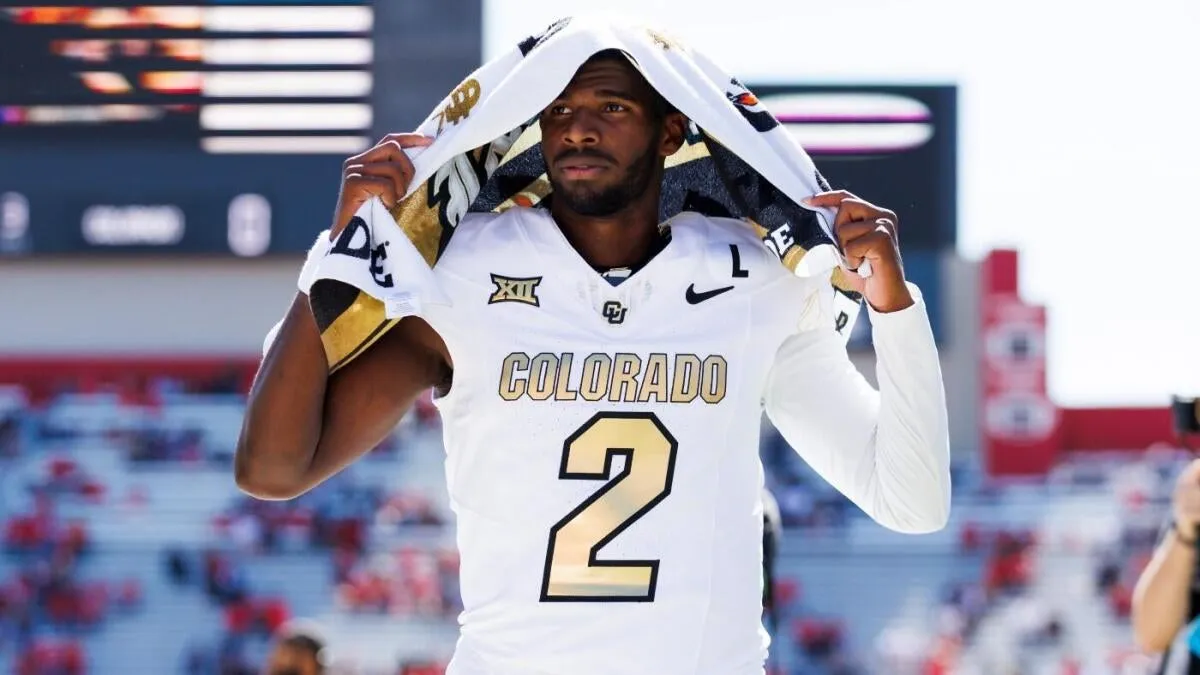
In a stunning turn of events, Colorado quarterback Shedeur Sanders completely fell out of the first round of the 2025 NFL Draft. Throughout the pre-draft process, few prospects have been as enigmatic and polarizing as Sanders, who many believed would secure a top spot as one of the premier quarterback prospects. While some draft analysts were high on his potential, the consensus seemed to lean towards him being a late first-round selection, at best.
After a stellar two-year stint at Colorado, Sanders found himself largely unavailable for evaluation following the season. He opted out of the East-West Shrine Bowl and did not participate in the NFL Scouting Combine, only making a brief appearance at a mandatory press conference in Indianapolis. As draft night approached, four teams were notably in need of a quarterback: the Tennessee Titans, Cleveland Browns, New York Giants, and Pittsburgh Steelers. Additionally, teams like the New York Jets and New Orleans Saints were also projected to have potential quarterback vacancies in the near future.
As anticipated, the Tennessee Titans used their No. 1 pick to select Cam Ward from Miami (FL), solidifying their quarterback position. The New York Giants surprised many by selecting edge rusher Abdul Carter third overall, before trading back into Round 1 to draft Jaxson Dart from Ole Miss. Meanwhile, the Cleveland Browns traded down to select defensive lineman Mason Graham at No. 5, while both the Jets and Saints focused on bolstering their offensive lines with top-10 tackles Armand Membou and Kelvin Banks Jr. respectively. The Steelers, instead, opted for defensive talent by picking Derrick Harmon.
After the first 32 picks were made, Shedeur Sanders remained without a team, leaving many to question the reasons behind his unexpected slide in the draft.
Historically, quarterbacks have been drafted earlier than other positions, even when prospects show flaws. In fact, in nine of the last ten years, the average draft position for the first three quarterbacks has been around pick No. 12. Given this backdrop, Sanders’ fall was indeed shocking. Even the Pittsburgh Steelers, who were often seen as a potential landing spot for him at pick No. 21, chose to pass.
So, what led to Shedeur Sanders' unexpected drop? From an evaluation perspective, the reasons may not be as surprising as they seem. Before the draft, when comparing Sanders to other quarterback prospects, he was ranked last among the top eight, indicating he was viewed as a good, but not great prospect, akin to players like Teddy Bridgewater and Geno Smith.
Maturity and off-field concerns also played a significant role in his draft evaluation. In a complex and multi-faceted evaluation process, analysts often prefer to focus on quantifiable metrics such as film, measurables, and performance metrics. In terms of size, Sanders measured in at 6-foot-1 and 212 pounds, which, while not disqualifying, does raise questions about durability compared to larger quarterbacks.
Moreover, Sanders struggled with mobility on the field, demonstrating a lack of quickness that is increasingly vital in today’s NFL. His pressure-to-sack rate was concerning, with a high of 25.1% in 2023 and a rate of 20.1% the following season. His average time to throw (TTT) of three seconds ranked him 26th among 156 qualifiers, suggesting that he struggled to evade pressure from opposing defenses.
While accuracy stands out as one of Sanders' key strengths—his adjusted completion percentage of 81.8% ranked third in the FBS in 2024—his average depth of target (aDOT) of 8.1 yards positioned him 129th out of 156 qualifiers. This discrepancy suggests that while he is accurate, his ability to stretch the field is limited compared to other elite quarterbacks like C.J. Stroud and Joe Burrow.
In retrospect, Sanders' slide in the draft may have been more predictable than initially assumed. Being selected in the second round is not a catastrophic outcome, yet it is surprising that no team among the first 32 selections found the allure of Shedeur Sanders compelling enough to take a chance on him. As the dust settles on the 2025 NFL Draft, the future remains uncertain for Deion Sanders' son, but his journey is far from over.